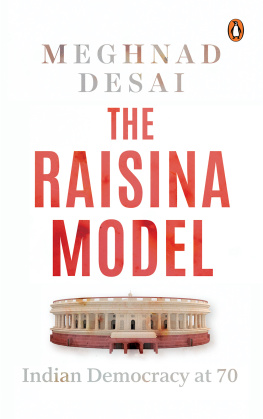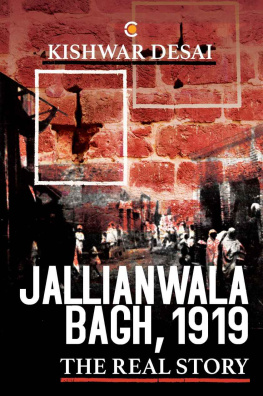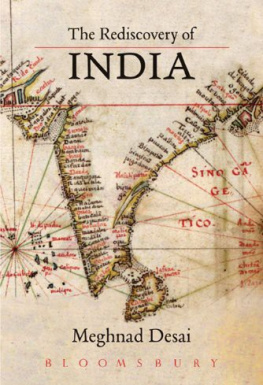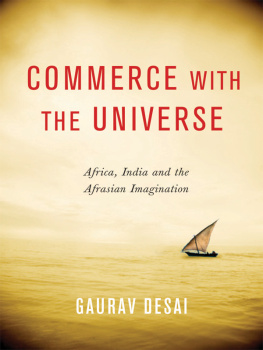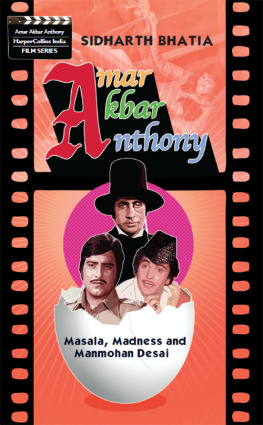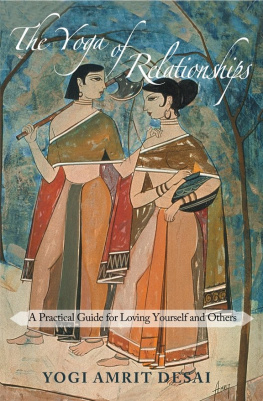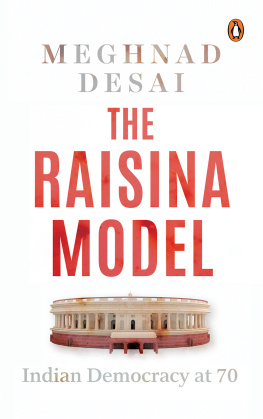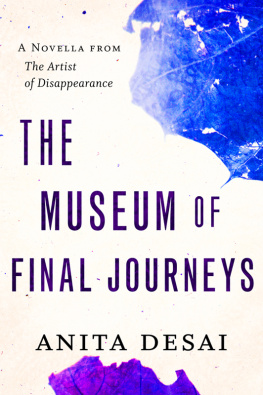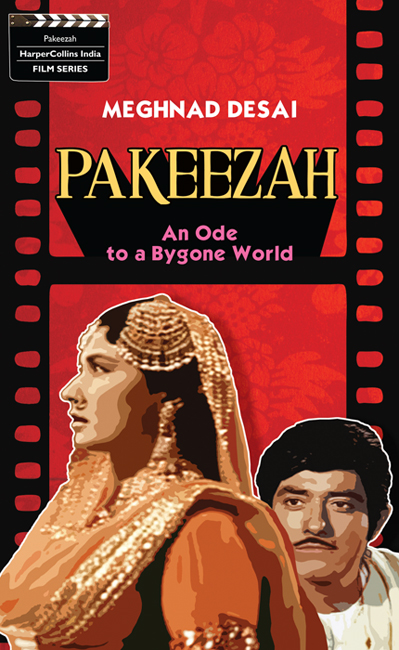
To Tailap Desai,
who has been my
mentor on matters of Bollywood
Contents
T here are films, sometimes great films, which do well at the box officefor example, Filmistans Nagin (1954) or RK Films Sangam (1964). They belong to a certain time when they entertain everyone. But they dont live beyond their immediate time. Bombay Talkies made Kismet in 1943 which proved to be another such hit film for another generation in the midst of war and the Quit India movement, though it would hardly muster a memory nowadays. Andaz, made by Mehboob Khan in 1949, starring Nargis, Dilip Kumar and Raj Kapoor, was a film which defined a new generation. Yet it does not get much mention today. No one has thought of remaking it. In the late-1960searly-1970s, Rajesh Khanna broke the mould and delivered many box-office hits and yet his films have been forgotten by most people today. Even a recent hit like Hum Aapke Hain Kaun will fade from memory.
There are films which fail on their first release and become classics later. Guru Dutts Kaagaz Ke Phool is an example. But even this film remains a favourite with only a certain segment of the audience. There are films, on the other hand, which not only define an age but also capture a perennial theme in culture or history and they are valued way beyond their time of release. Devdas, starring K.L. Saigal and directed by P.C. Barua, became an immortal film as well as a hit when it was released in 1935. It has been remade a dozen times since, and has been a hit each time as each generation comes to terms with its dissolute romantic hero. Mehboobs Mother India, made in 1957, is another such film. It is played somewhere around the world every day since its first release. It defines India not just of the 1950s, but of centuries. K. Asifs Mughal-e-Azam is yet another film which wins new generations of film-goers. Its opening line Main Hindustan hoon could be said for the film itselfMughal-e-Azam is India. Sholay became a cult film by its box-office longevity. But it does not speak of any specific Indian cultural tradition since it is just the most successful Indian version of a Western. Its remake by Ram Gopal VarmaRam Gopal Varma Ki Aagwas a resounding flop.
The TV serial Ramayana defined a resurgence of Hindu religious sentiment and cultural pride in a way that no other TV serial or film ever did. It could even be said to have had a political impact on the fortunes of the Bharatiya Janata Party and even more controversially the prospect for the Ram Janmabhoomi movement. Mahabharat, which followed, had a similar but not as great an impact.
A closer look at the films listed in the preceding paragraphs reveals something interesting: There have been few films about Muslim society which have touched the entire nation and gone beyond its time to resonate across generations. Mughal-e-Azam is not a Muslim film as such. It is a film about a Mughal emperor. If there has been a film which has captured Muslim culture of a certain period albeit with contemporary resonance, it has to be Kamal Amrohis Pakeezah.
K amal Amrohis story, which must have been written sometime in the mid-1950s, is a pioneering one since it revolves round the woman and not the man and indeed it goes across two generations of dancers, both of whom are in the right and suffer at the hands of their respectable lovers. Both Nargis and her daughter Sahibjaan are in their profession voluntarily (unlike Umrao Jaan who has been kidnapped as a child). Nargis is willing to escape but Sahibjaan feels the burden of her profession, something she cannot get away from.
The film opens with the silhouette of a dancing figure. A voiceover tells us this is Nargis. She is dancing before a stylized silhouette of admirers who are just lifeless images. We hear of her unhappiness as a tawaif and how she longs to escape her condition. She is a badnam mehfilon mein pighalti hui shama. A prince-like lover has promised her; we see a dark silhouette of the man. Now we hear the night has come when Shahbuddin (Ashok Kumar) will take her away.
Shahbuddins carriage arrives on a deserted street as Nargis (Meena Kumari) runs out of the house and joins him. Inside the carriage, with her head in his lap, we see that Nargis is incredulous that he has come to take her away to his exalted home after marrying her. He affirms his intention. As he bends over to kiss her, the scene dissolves.
We see the menacing figure of Hakim Saheb (Sapru), Shahbuddins father, as Nargis now clad in bridal red arrives with her new husband. Hakim Saheb rejects Shahbuddins choice as she is a tawaif. It is a gunah (crime) that Shahbuddin has committed. A shocked Nargis runs away and finds some palanquin bearers to take her to a qabristan. She is no longer in her red bridal outfit and arrives at the cemetery with a leather suitcase.
She is shown to have settled down inside the cemetery while Shahbuddin is searching for her in the kothas. We see her writing a letter but no more than that.
We next see a kotha where an itinerant jeweller has jewellery on display for a woman. It is Nawabjaan (Veena), Nargiss sister. A woman we have seen in the qabristan proffers some bangles to her. Nawabjaan recognizes them as her sisters and asks the woman where she got them. The woman takes her to Nargis who is dead by now with a little daughter by her side. Nawabjaan picks up the child and buries her sister. The woman asks her to take the leather case but Nawabjaan tells her to sell the contents.
In the next scene we see a second-hand bookseller hawking his wares. He calls out to someone who has been looking for a book for some time. The man is grateful for the book. Opening it, he finds a letter addressed to someone. He promises to deliver it himself.
We next see Shahbuddin reading the letter and realizing that it has taken seventeen years for the letter to reach him. But he now knows he has a daughter. He goes to Nargiss grave where the woman tells him her aunt has taken her away.
Shahbuddin is next seen in the bazaar outside Nawabjaans kotha. Nawabjaan realizes that Shahbuddin could take Sahibjaan away. She fobs him off saying Sahibjaan is about to start her mujra so he should come the next morning.
We then see Sahibjaan (Meena Kumari) for the first time dressed in a pink tawaif costume about to dance to Inhi logon ne le leena dupatta mera. This is a joyous, flirtatious performance to entice and entertain her clients. All around her in the bazaar, there are other dancers doing their mujras and people wandering around looking and admiring.
The mujra over, we see Shahbuddin the next morning coming to collect his daughter only to find the house deserted. Inquiring on the street, he is no wiser and is in despair.
We next see a station on a rainy night. As the train is leaving, a man in a hat and raincoat Salim (Raaj Kumar), though we are not told his name yetruns aboard and enters a compartment. This is an exclusive carriage. There is a pitcher of water and in a large bed a woman (Sahibjaan, though he does not know her name) is asleep. The man is thirsty and takes a drink from the pitcher. He sits down to bandage his leg which is bruised and notices that Sahibjaans foot is rubbing against his thigh. He sees that she has been writing with an exquisitely beautiful quill and he pockets it. The train arrives at Suhagpur the next morning. As Sahibjaan wakes up she finds a note at her feet in which the stranger apologizes for having barged into her compartment and tells her that he could not help admire her feet. They are beautiful and she should not let them be soiled by touching the ground. Sahibjaan is fascinated and pleased and saves the letter in her earring.
Next page


